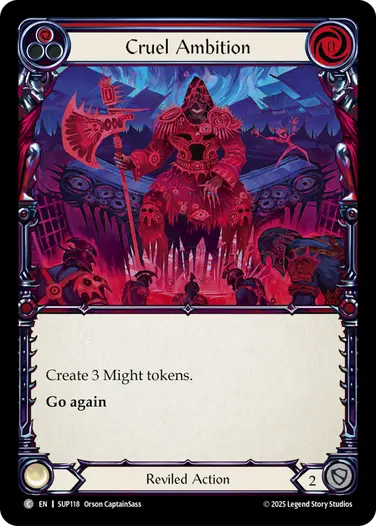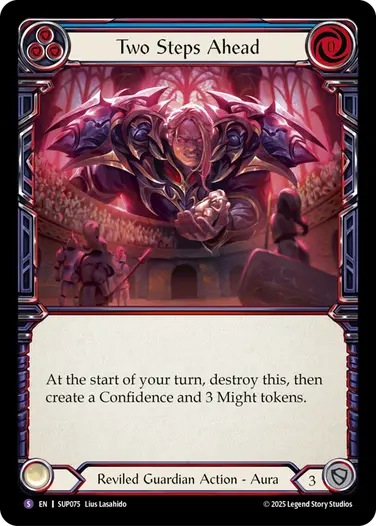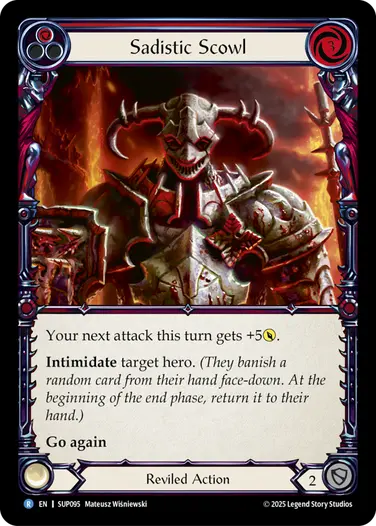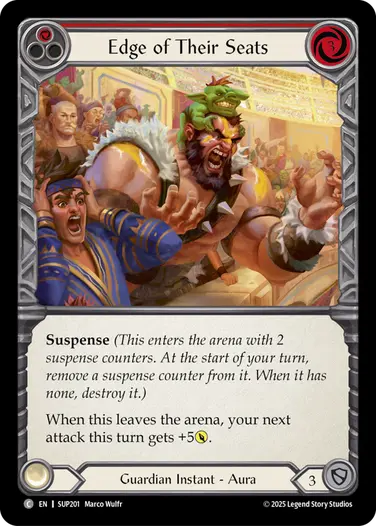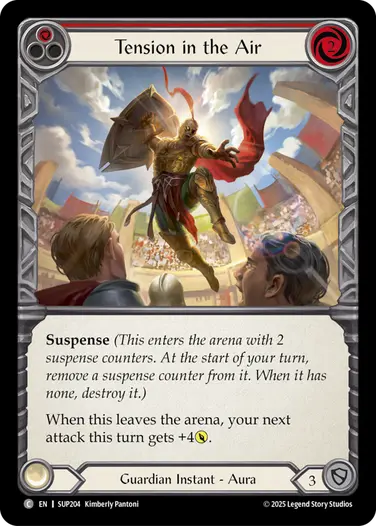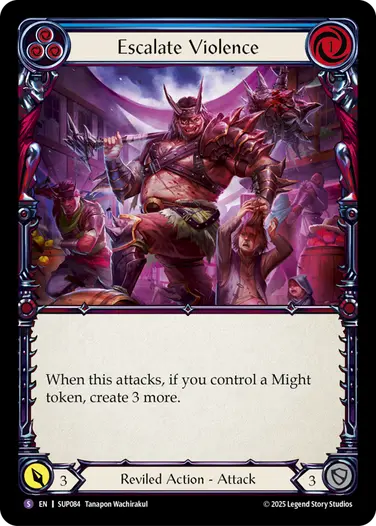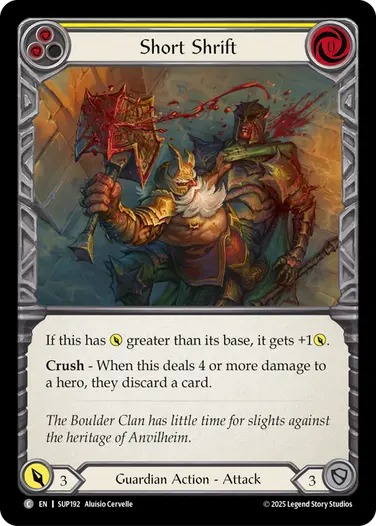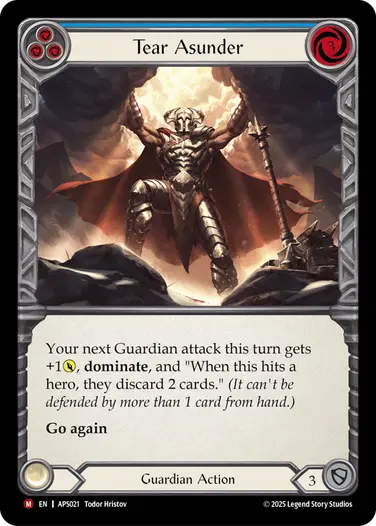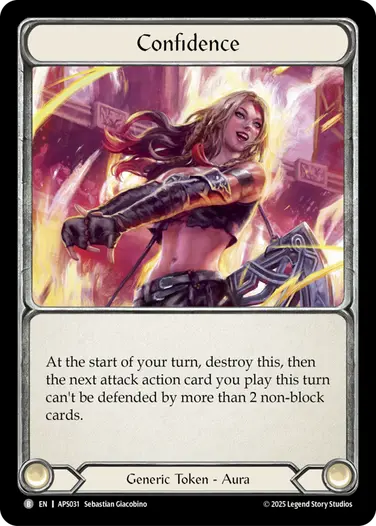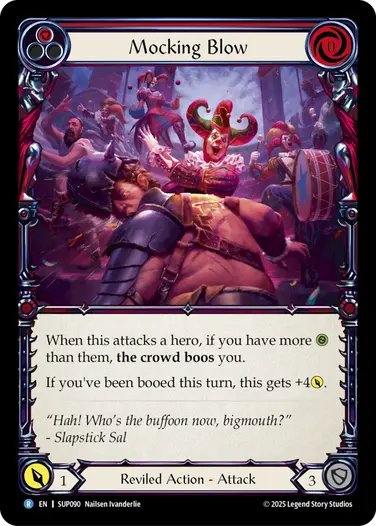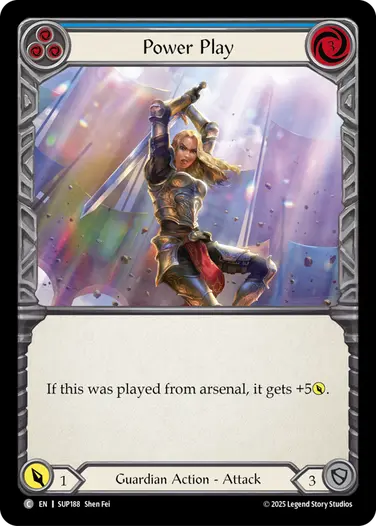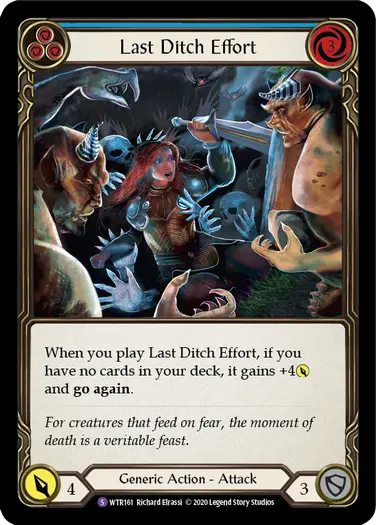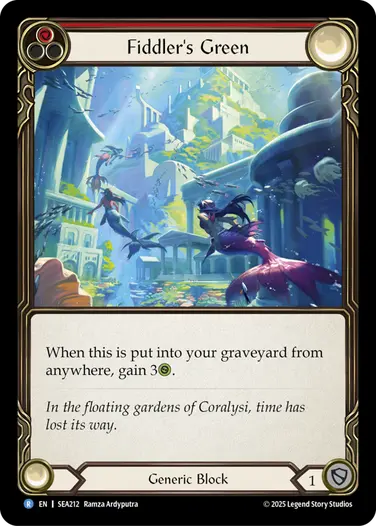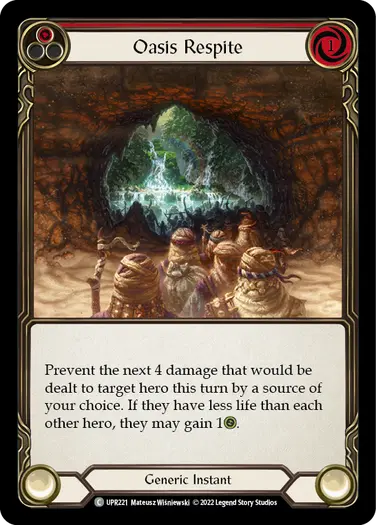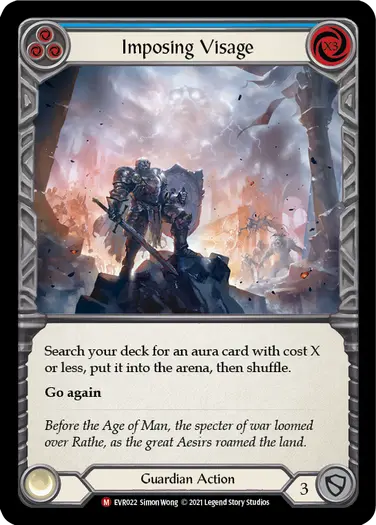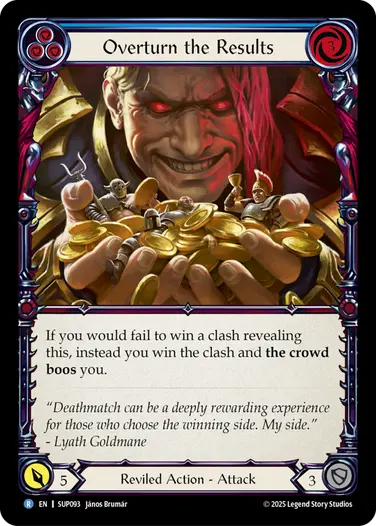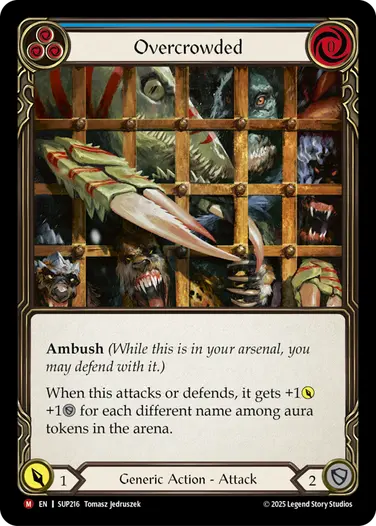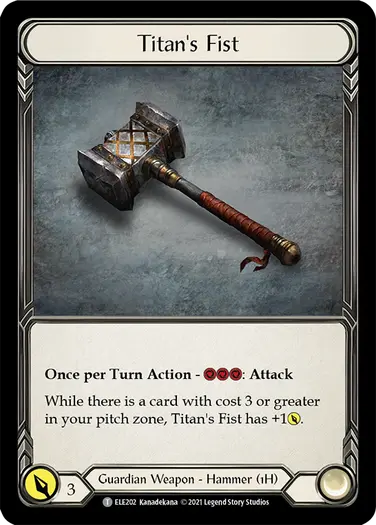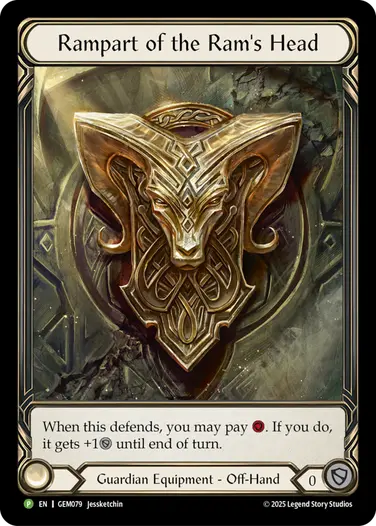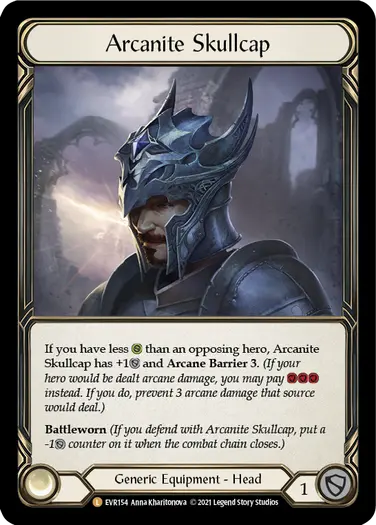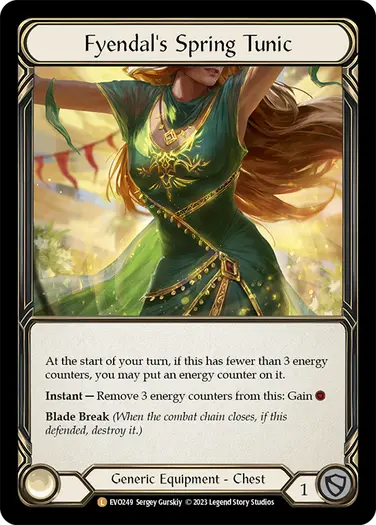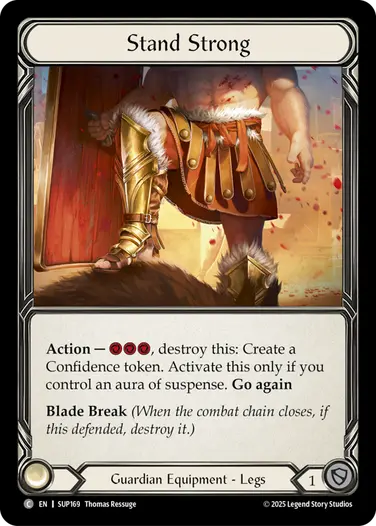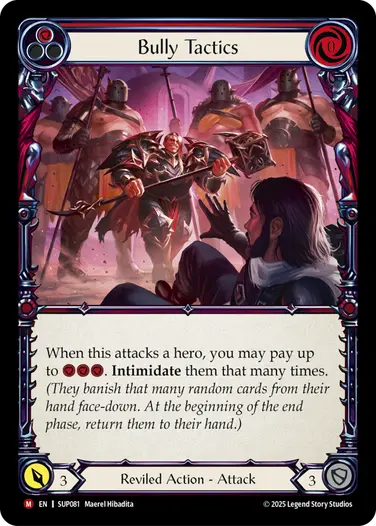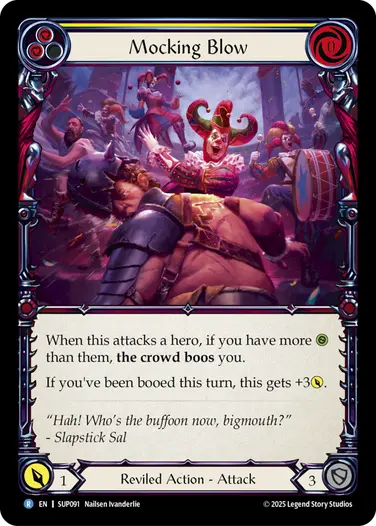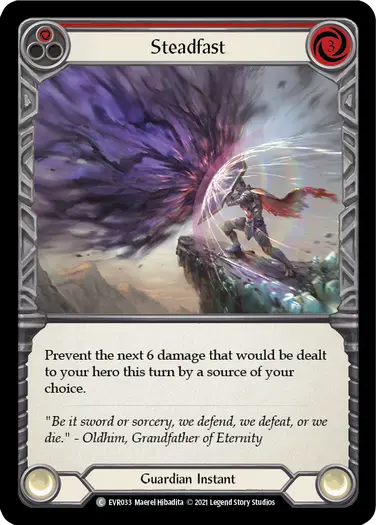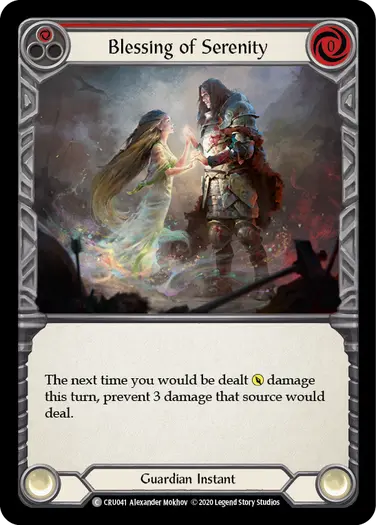From zero... to your first eighty cards!
Yuki Lee Bender breaks down her competitive Lyath Goldmane, Vile Savant Classic Constructed decklist, complete with sideboard and matchup tips. When a new hero hits the track, the pros get you up to speed with Zero to Eighty!
Lyath Goldmane, Vile Savant is a landmark addition to the Classic Constructed format not only as one of the two new Reviled heroes, but even more importantly as the first 5 intellect hero. Flesh and Blood is a game where card advantage is kept under very tight lock and key, so naturally the idea of having an extra card every turn is wildly powerful. However, this is not without a significant downside - all cards Lyath controls have their base defense and power halved, rounded up. This restriction warps the entire way the deck is constructed and informs every single one of our card choices.
However, the allure of 5 intellect is very strong, because even if every card Lyath draws could be worth 3 defense or power, he would already be a very solid deck. So in many ways, deckbuilding with Lyath feels like an exercise in minimizing how much his downside affects you, and maximizing his ability to convert his cards in hand.
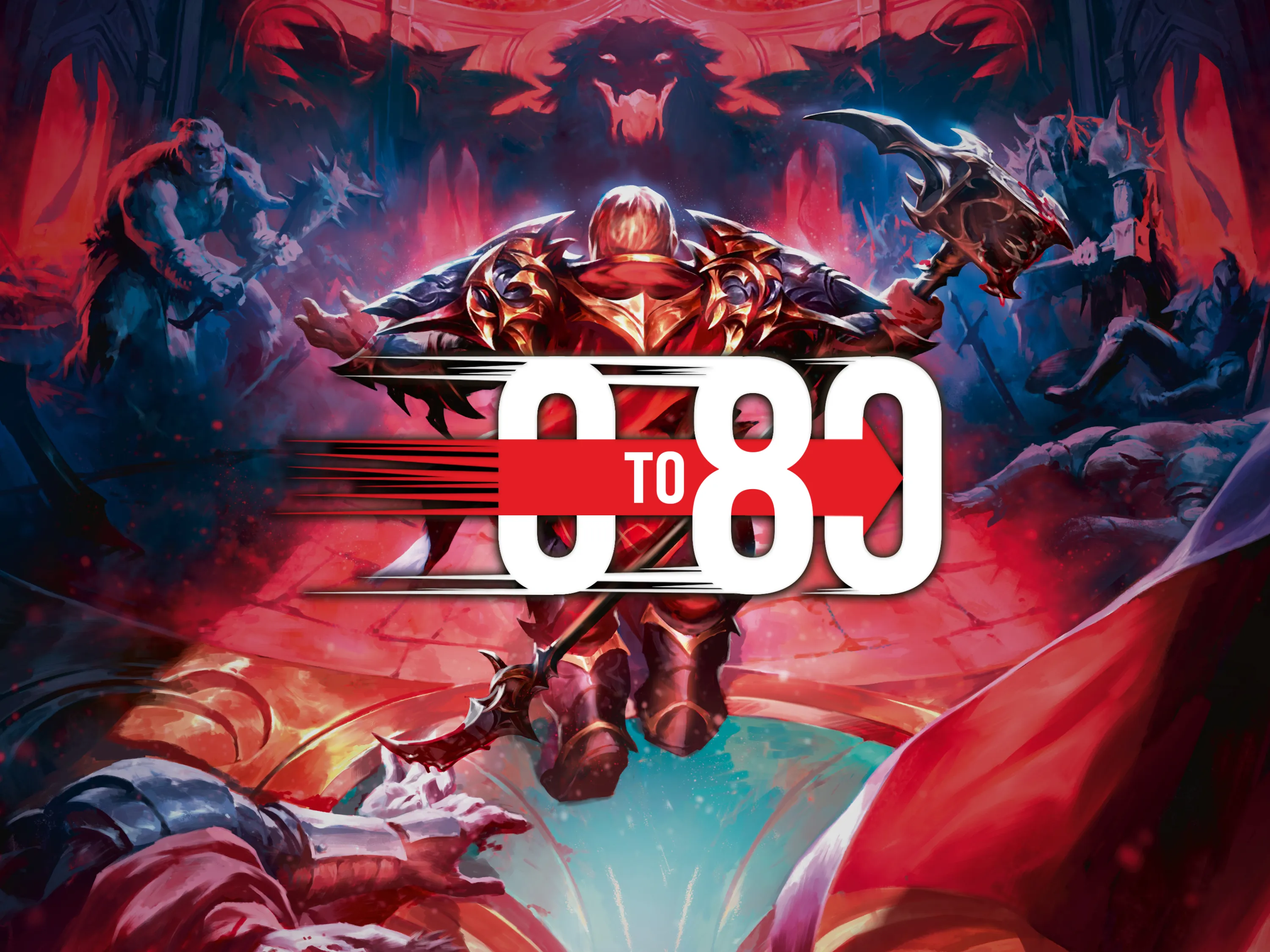
Card Choices
Let’s begin with what cards don’t play nicely with Lyath. In broad strokes, Lyath does very poorly with expensive attacks that have high power, because the halving effect is much more pronounced. For example, Spinal Crush is 3 cards for 5 damage whereas Snatch is 1 card for 2 damage. Additionally, defense reactions like Sink Below and Shelter from the Storm only defend for 2 and don’t get increased by Lyath’s ability, so they also are very low impact.
Instead Lyath tends to do well with effects that increase power, gain life, or prevent damage, as these are card effects that aren’t halved by his hero ability. Additionally, he tends to favor action cards over reaction or block cards so that he can increase their defense with his hero ability. With these ideas in mind, we will discuss the different types of cards included in the deck and the reason for their inclusion.
Pumps
Pumps are cards that increase the power of attacks and are a great way for Lyath to leverage large hands. There are plenty of Generic and Reviled options that we could play, however, as a rule of thumb they generally almost always defend for 2, which means unless we activate Lyath’s hero ability they only defend for a measly 1. Because of this, the 2-defense pumps can be particularly punishing to play in red-heavy hands.
This particular Lyath build only leans into a few of the most efficient options to help mitigate this downside. Cruel Ambition and Two Steps Ahead are delayed pumps, and Sadistic Scowl can be cleanly played off a blue and adds some additional evasion.
Auras of Suspense
To supplement our pumps, we also have access to the brand-new auras of suspense, which can pump our attacks on a future turn. Notably, these cards are Guardian instants which do not get their defense increased by Lyath’s hero ability, but do have the upside of always having 2-defense, which is a much higher baseline than the aforementioned pumps.
Additionally, the auras of suspense have plenty of upsides. While having a delayed effect can be slow at the end of the game, it does let us have some very powerful plays on the first turn of the game, and also lets us stack up damage while denying our opponents the ability to convert cards on defense. The auras being instants also means you can arsenal then play them out in response to arsenal destruction effects like Command and Conquer.
Another important factor is that by combining auras of suspense with various pump effects that take different amounts of time to activate, it becomes easier to stack more effects onto a single turn. The auras of suspense and Two Steps Ahead both take two turns to trigger, Might tokens from Cruel Ambition and Escalate Violence take one turn to activate, and Sadistic Scowl takes effect immediately.
This build of Lyath can quite easily stack anywhere from 10 to 20 bonus damage on a single turn. Especially against slower decks that like to block, it can often be desirable to line these effects up to create one extremely large turn, coupled with evasion to stop them from blocking.
Evasion and disruption
Stacking a bunch of vanilla damage onto a single turn does have a few problematic play patterns your opponent can use to help mitigate the value of your turns. One option, especially for more aggressive decks, is for your opponent to just choose to ignore you, accept that you played some slightly cost inefficient auras, and simply pull ahead again on the following turn. Adding disruption to these attacks can help mitigate this play pattern. Alternatively, opponents can block and maintain the life lead they were likely able to build while you were setting up. This is most easily mitigated by evasion like Confidence tokens or dominate.
This Lyath build includes Short Shrift as a premium disruptive target and Tear Asunder as a premium source of both disruption and evasion. Tear Asunder feels particularly important in this deck, and I frequently find myself putting it in arsenal when I have auras on board so I can line up Tear Asunder attacks for 10 or more damage one to three times per game.
Against more defensive decks that want to block out our big turns we have additional access to several forms of evasion. First, we can use Stand Strong or Two Steps Ahead to generate Confidence tokens. Next, we have Buckle and Tear Asunder as dominate sources. Finally, we have Bully Tactics and Sadistic Scowl as ways to intimidate blocking cards from our opponent’s hand.
Attacks that gain power
Attack actions with low base power that gain power are the most efficient threats for us to play. Short Shrift gains power so long as we have at least one source of power increase, which the Might token from Lyath’s activated ability easily supplies, allowing it to come in for 4 as a baseline, enough to enable its crush effect.
Mocking Blow (red) is an extremely efficient 1-card 6 value play, so long as we can satisfy the requirement of having higher life total. In a pinch, we can sometimes activate Lyath’s ability on our own turn to enable Mocking Blow, although this is notably less efficient than just having higher life.
Finally, in our resource base, Power Play can be a solid attack to arsenal when we can’t convert, and Last Ditch Effort can come in handy in extremely late-game fatigue scenarios.
Overall, you may notice there are a fairly small number of attacks in the deck. The reason for this is most attacks we could play are not any more efficient than swinging Titan’s Fist, so relying more on our weapon gives us greater consistency and lets us prioritize other types of cards, while only playing the most premium threats in our deck.
Damage prevention and life gain
Since Lyath primarily functions as a defensively slanted setup deck, he really wants some additional defensive tools to help him out. Fiddler's Green is an amazing 4 value card for our 5 intellect hero, while Sigil of Solace helps convert our hands and is always worth 3. These life gain effects also have the benefit of letting us manipulate our life total to enable one of our deck’s most powerful threats, Mocking Blow.
In the place of defense reactions, we have access to Steadfast, Blessing of Serenity, and Oasis Respite as premium defensive options we can arsenal to allow us to block some incredible amounts of damage when we need to. Oasis Respite has traditionally been a card that is a little bit too clunky to play due the 1-cost, however Lyath is a great home for it due to his hero ability giving us an onboard way to spend the other 2 resources if our Fyendal's Spring Tunic isn’t available.
Blues
Lyath has quite a bit of flexibility in his resource base, and as lists evolve players may tweak their blues to their preference and metagame. Generally speaking, 3+ cost card choices are fairly limited and become quite niche after Tear Asunder, Buckle, Power Play, and Imposing Visage. This deck makes use of Edge of Their Seats to help convert hands on offense, Overturn the Results for extra equity against Brute and big bro Victor, and Last Ditch Effort to help supplement our fatigue gameplan.
0-costs in this list include Two Steps Ahead for first turn equity and to pair with Imposing Visage, Overcrowded as a card that can often defend for 4 and works well vs Codex of Frailty, and Escalate Violence which can help us stack Might tokens when paired with Lyath’s hero ability or Cruel Ambition.
Equipment
Lyath’s equipment is also subject to having its base defense halved, rounded up. This restriction greatly influences which equipment the deck can reasonably play.
Titan’s Fist
If we pitch a blue 3-cost, Titan’s Fist gets halved to 2 base power, then gets +1 power from its ability, bringing it to 3. This means that if we activated Lyath on the opponent's turn, our hammer attacks for 4, which is what a standard Guardian hammer attacks for and makes it far better than any other option.
This generally gives us a baseline of pitching a card for Lyath, blocking with 3 cards for 9 and Rampart for 1, then attacking with Titan’s Fist for 4, allowing us to convert our hand into 14 value, which is a very high floor. Titan’s Fist actually gets swung a fair bit, since our deck is fairly low on attack action cards, as there's not many which are more efficient than our hammer. Additionally, Titan’s Fist wears Tear Asunder very well, especially when combined with pumps and Might tokens.
Rampart of the Ram’s Head
Rampart is an incredible off-hand for Lyath, as you frequently want to activate his hero ability on your opponent’s turn to facilitate better blocks, which naturally leaves you with an extra resource for Rampart. Even if other shields didn’t get reduced by Lyath’s hero ability, Rampart would easily be our off-hand of choice.
Don’t forget that if opponents close the chain we can block an additional time with Rampart and even put an additional resource into it if we want to! This is especially relevant against Brutes playing Gauntlets of Tyrannical Rex, but also has applications in many other matchups.
Arcanite Skullcap
Arcanite Skullcap used to be a staple headpiece long ago, but has since fallen out of favor for Crown of Providence or Balance of Justice. However, due to it gaining defense when we are on lower life, it provides us with a rare opportunity to get 3 defensive value out of a piece of our equipment. For this simple reason, Arcanite Skullcap is our headpiece of choice.
Don’t be afraid to block with it aggressively when you are on lower life total to help make sure you get full value out of it, and also to make it easier to catch up on life totals for Mocking Blow.
Fyendal’s Spring Tunic
Without solid defensive options available to us, Fyendal’s Spring Tunic is an easy choice for this hero. We have a few Tunic outlets in the form of Oasis Respite, Rampart of the Ram’s Head, and Escalate Violence. I also find myself using it to help play a 3-cost off a yellow pitch, or to activate Lyath and play Tension in the Air off a single blue pitch.
Stand Strong
Our leg options are not incredibly powerful, but Stand Strong gives us the added benefit of having a Confidence token on demand, which we can line up with our pumps. Ironhide Legs arguably offers a slightly better defensive option, but I think the flexibility of Stand Strong makes it the boots of choice for this aura focused Lyath build.
Gameplans
This Lyath build has a generally defensive slant, and can play towards three distinct gameplans:
- Midrange Value. This plan usually includes Mocking Blow, and just On the Edge of Their Seats and Leave Them Hanging as far as auras of suspense go. We block well, play good small hands, and find one or two spots to have a big Tear Asunder turn to pull ahead.
- Damage Stacking. This plan plays full auras and pumps and looks to stack as much damage onto an evasive attack a few times per game to close it out against defensive decks.
- Fatigue. Between Rampart, Titan’s Fist, and very good defense, we are able to threaten to fatigue most decks in the game. Lyath can sometimes also generally threaten fatigue if players start blocking too much, especially against the damage stacking plan.
Sideboarding
Our deck consists of a 52-card core that can bring in different cards depending on the style of matchup. Against aggro we often board 60-63 cards so our deck functions as efficiently as possible.
In matchups that are prone to go long, we frequently board above 60 cards so that we are able to threaten fatigue if our opponents spend too much time blocking out. This is especially important against the likes of Guardians, Tuffnut, Assassins, defensive Warriors, and Earth heroes.
For each sideboard card we will discuss what its use cases are and which of the three gameplans they come in for. However, keep in mind that this is still an early decklist and many matchups will need to be optimized beyond these three base gameplans. Don’t be afraid to try things out!
Tension in the Air + Sadistic Scowl
Tension in the Air and Sadistic Scowl give us additional tools to stack damage against decks that want to defend against us. Usually, Tension in the Air is the first set of pumps to bring in and they are preferred for the midrange value plan and the fatigue plan. Instant speed, higher block value, and the ability to play them and use 1 floating for Oasis Respite or Rampart makes them more flexible.
Sadistic Scowl then also comes in against hyper defensive decks like Earth heroes for the damage stacking plan, and for grindy matchups like Valda for the fatigue gameplan.
Bully Tactics
Bully Tactics only comes in with Tension in the Air and/or Sadistic Scowl when we want to damage stack and go for big evasive attacks against defensive decks. In other matchups we have better options. Notably, the card does defend for 3, so it can come in if we want extra tools for the fatigue plan, but it’s the lowest value card in terms of deck damage of all our sideboard cards, so it should only come in if we want to present all the cards in our deck.
Mocking Blow (red + yellow)
Mocking Blow is generally at its best when we want to play our midrange value gameplan against more aggressive decks, as those are the matchups we want to block the most and play auras the least. Mocking Blows have a lot of anti-synergy with the damage stacking plan, as taking multiple off turns is not conducive to having a higher life total than your opponent.
Mocking Blow is easily our best 1-card play against aggressive decks and often facilitates a 'get ahead, stay ahead' kind of playstyle. They are solid additions for the fatigue gameplan, because when our life total is higher they are high deck damage, and they also defend for 3.
Steadfast + Blessing of Serenity
Steadfast can be brought in for all three plans, but depends a lot on the opponent we are facing. It's a great defensive tool but is reserved for decks that have sufficiently large attacks, and should be avoided against go wide decks like Ninja. Keep in mind that Steadfast and Oasis Respite also reduce arcane damage so it’s extremely relevant against Kano!
Blessing of Serenity is great any time when we want to block or where we may want access to reaction-speed defense, and functions well in both the midrange value and fatigue gameplans.
Other options
We are still very early into Super Slam season and Lyath is an incredibly deep hero with a lot of deckbuilding options. There are plenty of cards not included here that are worth considering, but they do have some drawbacks:
- Act of Glory is another good pump option for aura stacking, and at times has been in the deck over Sadistic Scowl. Alternatively, you can play it as a higher value but tougher to resolve Tension in the Air. However, 4-cost can be a bit clunky.
- Revolting Gesture and Villainous Pose are good options for pumps on your own turn if you want to lean into a more aggressive playstyle.
- Ironhide Legs offers a slightly stronger defensive option than Stand Strong and could be included for matchups where the Confidence token isn’t valuable. However, the requirement to pay a resource into it can be clunky.
- Overload (blue) could be an option for go again, but more importantly represents easy access to dominate. The 2-defense and 0-cost comes at a steep price though.
- Wee Wrecking Ball is a good choice if we want an additional disruptive attack. However, if opponents fully convert their hands on offense when Lyath’s auras are about to go off, this card loses a lot of its allure, because they would often be without an arsenal.
- Liar’s Charm can potentially be used as a sideboard option against heroes who are especially reliant on their hero ability. Alternatively, you can aim to arsenal this card and target yourself, which allows you to block very well and leverage higher defense equipment. However, this mode of play can be a bit clunky, and I found that just generally having more prevention effects was preferrable.
- Truth or Trickery is a powerful defensive tool but only works against go wide decks and is a bit high variance. This card can be very powerful, but Lyath is pulled in quite a few directions between being defensive and aura stacking, and I found this card a little bit too narrow.
Metagame Position
I think Lyath is inherently powerful enough to be a meta deck, but excels in certain matchups while struggling in others. Exactly how strong Lyath will be depends a lot on what the metagame looks like and on the Lyath player’s ability to find gameplans into some of the more problematic matchups if they are present.
In my experience, Lyath plays very nicely into aggressive value-based decks like Cindra and Kayo due to his strong ability to block, and by leveraging disruption and the value of Mocking Blow. Additionally, he can easily fatigue a hero like Dash I/O.
On the other end of the spectrum, he also feels quite competent into other defensive decks that implement a fairly standard gameplan. Other Guardians tend to struggle with the on-turn off-turn play patterns in combination with evasion, and can also be fatigued. Arakni, Marionette also feels quite close, and Lyath can threaten to win both through damage or fatigue through a grindy game.
Verdance’s combo gameplan and Florian’s Germinate endgame prove a bit more problematic due to them blocking quite well and having a very powerful late game advantage. It’s possible that with an aggressive enough gameplan Lyath can overwhelm Verdance, or that he could go the opposite direction and find a way to fatigue her. Florian can be brought down by the damage stacking plan, but I think it is up to Lyath to figure out how to line everything up, and the games can be quite technical, especially if they have aura hate.
Ally decks like Gravy Bones, and to a lesser extent, Kassai, are also a bit tricky for Lyath to deal with. He is naturally very low on go again, and wanting to increase the power of his first attack is not very conducive to clearing allies. Ally decks currently seem like the hardest problem for Lyath to solve.
Get in the Ring!
Lyath is a very fun and intricate deck to play. Between Rampart, Lyath’s hero ability, and a lot of instants, the deck makes a staggering number of decisions both on the opponent’s turn as well as their own. He also has a lot of flexibility in terms of playing for immediate value or setting up for later in the game. I walk away from almost every Lyath game I play thinking about several things I could have done better, or wondering what would have happened if I decided to take a different approach in a key spot.
I look forward to seeing how Lyath decks develop and how he does across the upcoming Pro Quest: Yokohama season. I also know many other players have been exploring more aggressively slanted Lyath decks, and while I couldn’t get this to a spot I was happy with, I am curious to see if there’s something I missed. I also wonder if it’s possible a build somewhere in the middle of the two styles of decks exists.
